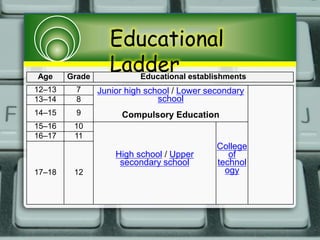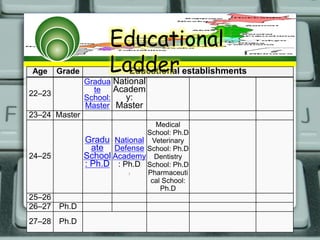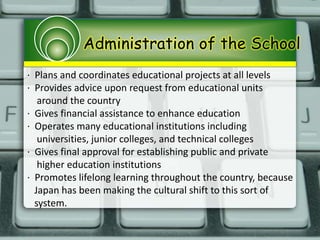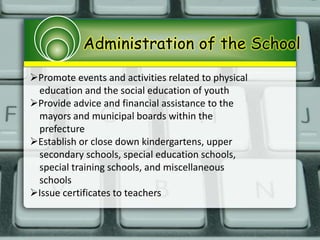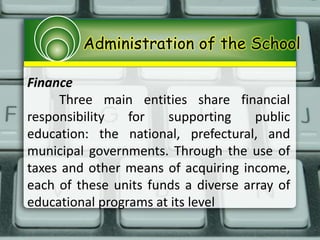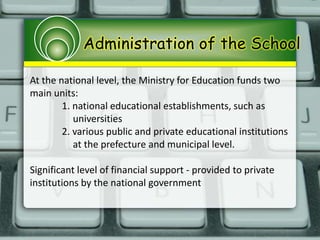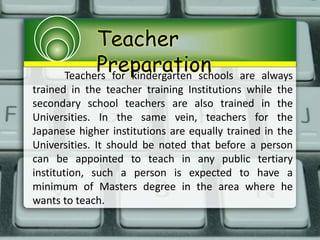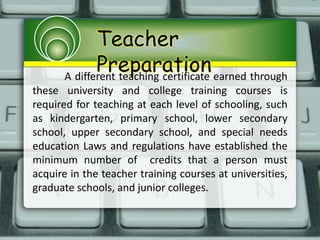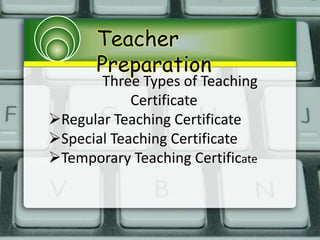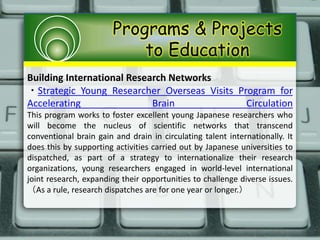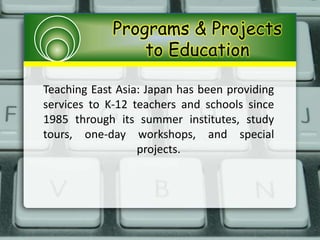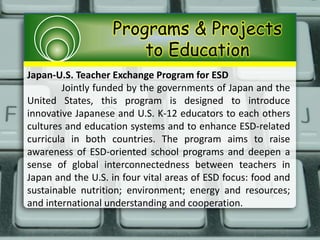This document provides information about the education system in Japan. It discusses the history of education in Japan from the introduction of Chinese learning in the 6th century through periods of influence from China and Europe. It also describes the current K-12 system with 6 years of elementary school, 3 years of junior high, and 3 years of high school. The administration of schools is outlined from the national Ministry of Education down to local boards. Requirements for teacher certification and types of certificates are presented. Finally, some issues with the system are raised such as lack of competition and individual differences.

![Important
Facts
Japan
日本国
Nippon-koku
Nihon-koku
Anthem:
"Kimigayo"
"君が代"
MENU
0:00
Capital
Tokyo
35°41′N 139°46′
E
Official
languages
None[1]
Recognised
Regional
languages
Aynu itak
Ryukyuan
languages
Eastern
Japanese
Western
Japanese
several
other Japanese
dialects
National
language
Japanese
Ethnic group
s(2011[2])
98.5% Ja
panese
Religion
Shinto
Buddhism
Minor religion
Christianity
Islam
Hinduism
Sikhism
Japan Population 2014
126,757,591
Land Area
378, 000 square km](https://image.slidesharecdn.com/educationalsysteminjapan-150126185335-conversion-gate02/85/Educational-system-in-japan-2-320.jpg)

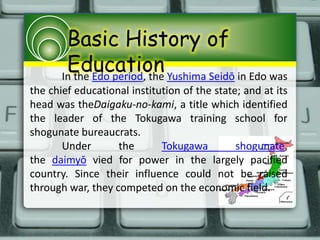

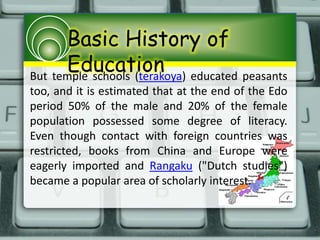


![Basic History of
EducationPost-WWII
In successive international tests of
mathematics, Japanese children consistently rank
at or near the top (see TIMSS).[6] The Ministry of
Education, Culture, Sports, Science and
Technology (MEXT) is responsible for educational
administration. Students' academic skills, however,
may have declined since the mid-1990s](https://image.slidesharecdn.com/educationalsysteminjapan-150126185335-conversion-gate02/85/Educational-system-in-japan-9-320.jpg)



